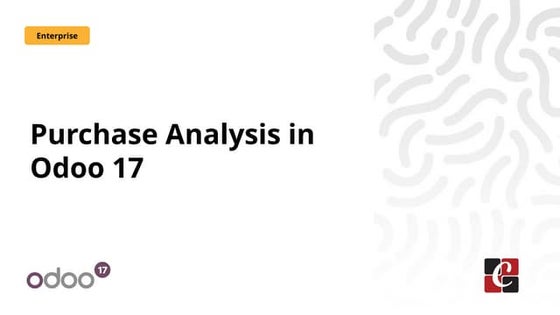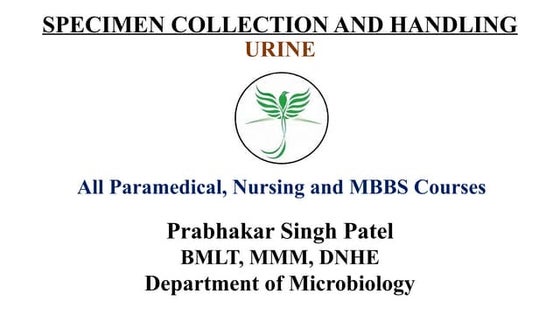Cybercrime and security.pptx
- 1. C Y B E R C R I M E A N D S E C U R I T Y B Y S O B I A S A E E D , AT I Q A & Z A R A
- 2. TA B L E O F C O N T E N T S ŌĆó Introduction ŌĆó History of Cybercrime ŌĆó Categories of Cybercrime ŌĆó Types of Cybercrime ŌĆó Cyberthreats to National Security ŌĆó Cyber security ŌĆó Advantages of Cyber security ŌĆó Safety measures against Cybercrime ŌĆó Cyber Laws in Pakistan ŌĆó NCCS ŌĆó Conclusion ŌĆó Tools used in presentation ŌĆó References
- 3. I N T R O D U C T I O N ŌĆóCybercrime is any criminal activity that involves a computer, networked device or a network. ŌĆóAny unlawful act carried out by using internet is called a cybercrime.
- 4. H I S T O R Y O F C Y B E R C R I M E ŌĆó The first cybercrime was reported in 1820. ŌĆó In 1834, French robbers hacked French Telegraph system and stole the information. ŌĆó In 1969, the first ever virus in computer history attacked on the University Washington Data Center and replicated the files before the machine overload. This virus was called Rabbit Virus. ŌĆó From 1970-1975 Kevin-Mitnick penetrates some of the highest-guarded networks in the world, including Nokia and Motorola and breech the internal operating system of devices. ŌĆó In 1973, A local New York bank teller uses a machine to steal more than $2 million.
- 5. H I S T O R Y O F C Y B E R C R I M E ŌĆó In1982, The CIA blows up a Siberian gas pipeline by injecting logic bomb into the network and the operating system to monitor the gas pipeline without using a bomb or a missile. ŌĆó In 1988, Morris Worm was released on a computer of MIT. ŌĆó In 1999, Melissa virus infects Microsoft Word records, transmitting itself via email as an attachment automatically. It mails out to the first 50 names mentioned in the Outlook email address box of an infected device. ŌĆó In 2013-2015, Global Bank Hack more than 100 organizations around the world have access to secure information from a community of Russian-based hackers.
- 6. C AT E G O R I E S O F C Y B E R C R I M E
- 7. C R I M E A G A I N S T P E O P L E These crimes include cyber harassment and stalking, distribution of child pornography, credit card fraud, human trafficking, spoofing, identity theft, and online libel or slander.
- 8. C R I M E S A G A I N S T P R O P E R T Y Some online crimes occur against property, such as a computer or server. These crimes include DDOS attacks, hacking, virus transmission, cyber and typo squatting, computer vandalism, copyright infringement, and IPR violations.
- 9. When a cybercrime is committed against the government, it is considered an attack on that nation's sovereignty. Cybercrimes against the government include hacking, accessing confidential information, cyber warfare, cyber terrorism, and pirated software. C R I M E S A G A I N S T P R O P E R T Y
- 10. T Y P E S O F C Y B E R C R I M E
- 11. H A C K I N G ŌĆó Hacking refers to activities that seek to compromise digital devices, such as computers, smartphones, tablets, and even entire networks. ŌĆó And while hacking might not always be for malicious purposes. ŌĆó Hacking is unlawful activity by cybercriminals, motivated by financial gain, protest, information gathering (spying), and even just for the ŌĆ£funŌĆØ of the challenge. ŌĆó Person who does hacking is called a hacker.
- 12. C H I L D P O R N O G R A P H Y ŌĆó The Internet is highly used by its abuser to abuse child sexually worldwide. ŌĆó More Homes have access to Internet, more children would be using Internet and more of the chances of falling victim to the aggression of pedophiles. ŌĆó Pedophiles uses the false identity to trap the children. Pedophiles connect children in the various chat rooms which are used by children to connect other children.
- 13. D E N I A L O F S E R V I C E AT TA C K ŌĆó A Denial-of-Service (DoS) attack is an attack meant to shut down a machine or network, making it inaccessible to its intended users. DoS attacks accomplish this by flooding the target with traffic or sending it information that triggers a crash.
- 14. V I R U S D I S S E M I N AT I O N ŌĆó Malicious software that attaches itself through the other softwares. ŌĆó Virus, worms, Trojan horse, web jacking, e-mail spoofing and logic bomb etc. Adderall malicious program that are harmful for our computer systems.
- 15. C O M P U T E R VA N D A L I S M ŌĆó Damaging and destroying data rather than stealing are misusing them is called cyber vandalism. ŌĆó These are the programs that attach themselves to a file that circulate.
- 16. C Y B E R T E R R O R I S M ŌĆó Terrorist attack on the computer network is by distributed denial of service attacks, hate websites and hate emails and attack on service networks etc.
- 17. S O F T WA R E P I R A C Y ŌĆó Theft of software by legal copying of genuine programs or counterfeiting and distribution of products intended to pass for original.
- 18. C Y B E R T H R E AT S T O N AT I O N A L S E C U R I T Y ŌĆó Cyber crime is increasing in Pakistan tremendously from last two decades. ŌĆó Pakistan is one of the amongst most higher Internet user in the world . ŌĆó Terrorists are using websites to raise fund for their terrorist activities. ŌĆó Some of the NGO's are also using Internet to raise the funds for the terrorists and criminal groups in the name of poor people and orphan child. ŌĆó Harassment by using social media is increasing day by day and causes unrecoverable damage to society. ŌĆó The policies are not implemented practically.
- 19. C Y B E R S E C U R I T Y
- 20. C Y B E R S E C U R I T Y ŌĆó Cyber security involves the protection of secret data and business information through prevention, detection and response to different online attacks. Cyber security is preventing the attacks from the cyber criminals.
- 21. P R I VA C Y P O L I C Y ŌĆó Before submitting your name, e-mail and other personal data to the website read this privacy policy. ŌĆó Some of the websites sell your data to the different vendors that can be used for illegal purpose. ŌĆó Always keep your privacy settings strict in different websites or apps like Facebook, YouTube, Instagram and WhatsApp etc.
- 22. K E E P T H E S O F T WA R E U P D AT E ŌĆó Always use the updated software in your computer system and don't use pirated software or try to crack password of softwares by using crackers. ŌĆó Always keep your antivirus software updated and use its latest version. ŌĆó Use good passwords that are difficult to guess. ŌĆó Don't use your names, date of birth and personal number as your passwords. ŌĆó Always used licensed softwares.
- 23. D I S A B L E R E M O T E C O N N E C T I V I T Y ŌĆó Don't use public network like public Wi-Fi provided by the governments at public places. ŌĆó These are highly used by hackers to steal the data through attacking these public networks. ŌĆó You should disable the features that are not in use.
- 24. A D VA N TA G E S O F C Y B E R S E C U R I T Y ŌĆó Cyber security prevent us from the cyber attack. ŌĆó Internet security processing all the incoming and outcoming data. ŌĆó It helps us to select the websites that are secure or not secure for us. ŌĆó It prevents us from the hacks and viruses. ŌĆó Applications for cyber security in our computer system should be up to date.
- 25. S A F E T Y M E A S U R E S A G A I N S T C Y B E R C R I M E ŌĆó Use antivirus software. ŌĆó Insert firewalls ŌĆó Uninstall unnecessary softwares ŌĆó Maintain backup ŌĆó Check security settings ŌĆó Always note any change in your computer system ŌĆó Don't install softwares from a known websites
- 26. C Y B E R L AW S I N PA K I S TA N ŌĆó On February 18, 2022, the government passed an ordinance amending the Pakistan Electronic Crimes Act, 2016 (PECA) to make online ŌĆ£defamationŌĆØ of authorities, including the military and judiciary, a criminal offense with harsh penalties. ŌĆó They are very insufficient cyber laws in Pakistan. And the laws that are passed are not implemented practically. ŌĆó Due to the weak legislation the cyber crimes are increasing day by day.
- 27. N C C S ( N AT I O N A L C E N T E R O F C Y B E R S E C U R I T Y ) ŌĆó NCCs is the initiative taken by the government to prevent cyber crimes. ŌĆó But it's offices are only in big cities of Pakistan and is not accessible in most of the areas of Pakistan. ŌĆó The method to report the cyber crime in NCCS is online and most of the people R unaware about it. ŌĆó The procedure of case registration in NCCS it's just like a FIR in police station, so the victims are reluctant to report. ŌĆó All these are the reasons that very few cyber crimes are reported and many of them remain unsolved.
- 28. C O N C L U S I O N ŌĆó It is very difficult to restrict the cyber crimes. ŌĆó Government should take the measures two aware the people about the cyber security. ŌĆó There should be strict legislation to stop the cyber crimes. ŌĆó The method of reporting cyber crime should be easy, and the investigation agencies and media should keep the face a victim secret. ŌĆó Pakistan is among us the countries well highly watch pornography. People should stop to access these websites to avoid cyber stalking and Bullying. ŌĆó There should be a body do keep check on all the data traffic and content that is uploaded on different website and watched in Pakistan. ŌĆó There should be a content filtering body should filter the data that can be watched in our country.
- 29. R E F E R E N C E S ŌĆó /aemankhan/cybercrimeppt-27376284 ŌĆó https://www.jigsawacademy.com/blogs/cyber-security/history-of-cybercrime/ ŌĆó https://cybersecurityventures.com/the-history-of-cybercrime-and-cybersecurity-1940- 2020/ ŌĆó https://www.swierlaw.com/faqs/what-are-the-three-types-of-cyber-crimes-.cfm ŌĆó https://www.malwarebytes.com/hacker ŌĆó https://www.techtarget.com/searchsecurity/definition/denial-of-service ŌĆó https://www.nccs.pk/ ŌĆó NATIONAL CYBER SECURITY POLICY 2021
- 30. T O O L S U S E D F O R P R E S E N TAT I O N ŌĆó Microsoft PowerPoint ŌĆó NATIONAL CYBER SECURITY POLICY 2021 document. ŌĆó Research papers ŌĆó Different websites as per reference given in above slide.













































































